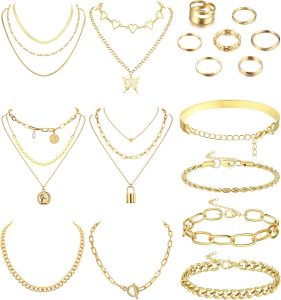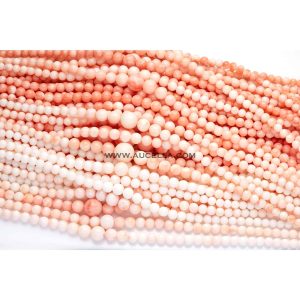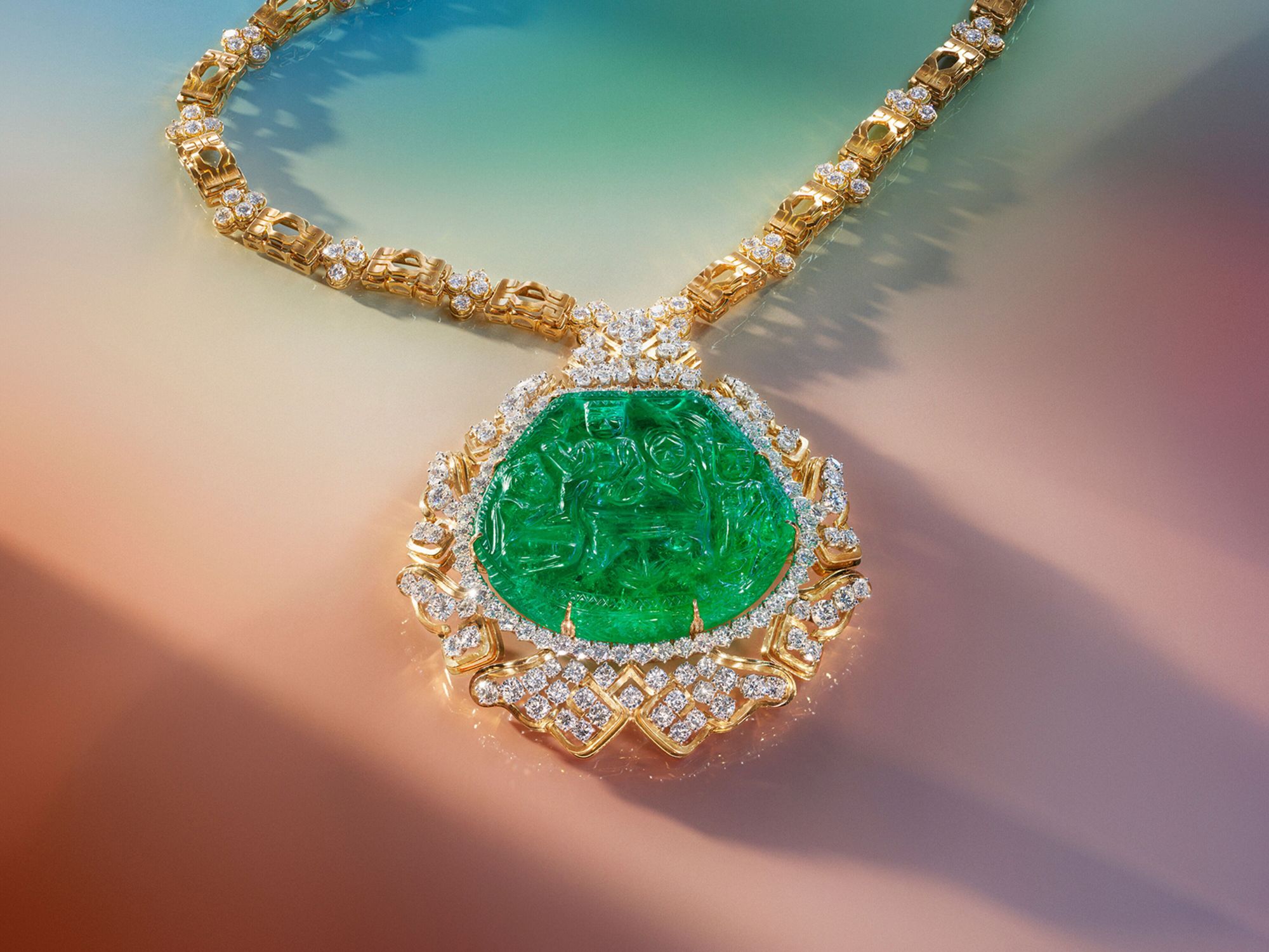Views: 26
How To Start a Jewelry Business in Nigeria in 10 Steps

The jewelry market is growing fast in Nigeria and beyond and isn’t slowing down. In 2023, the jewelry industry was worth over $ 350 billion. In Nigeria, people are buying both luxury jewelry and everyday accessories, giving you many product options to choose from. If you want to start your own jewelry business in Nigeria, you can do it in just ten steps. In this article, we’ll guide you on how to start a jewelry business in Nigeria and keep improving your business strategy over time.
10 Simple Steps on How to Start a Jewelry Business In 2025
- Decide your niche
Selling jewelry in Nigeria, either online or in a physical store, is a great business idea. Like any other business, you need to be clear about what products you offer. Choosing a niche doesn’t limit your business—it helps you market better and reach the right customers. Niches that have fewer competitors make it easier for small businesses to succeed.
Here are some popular jewelry niches to consider:
- Handmade jewelry – People love handmade pieces because they are unique. However, starting this type of business can be expensive since you can’t use dropshipping. But if done well, it can attract loyal customers.
- Fine jewelry – Made with precious metals and gemstones, fine jewelry is high quality and expensive. Since customers don’t buy it in bulk, it can be harder for small businesses to enter this market.
- Fashion jewelry – Also called costume jewelry, this is cheaper and meant for everyday wear. It’s easier to produce in large quantities and appeals to more customers.
Your ideal customer will determine what kind of jewelry you should sell. If you want to target wealthy buyers looking for luxury pieces, fine jewelry is best. If you prefer selling affordable accessories for everyday wear, fashion jewelry is a better option.
- Research market trends
To succeed in the jewelry business, you must first understand your audience and ensure your products match their needs. This means researching trends, analyzing consumer preferences, and finding ways to make your designs stand out.
One of the best ways to confirm that your jewelry will sell is by following industry trends. Reading fashion and jewelry blogs, keeping up with social media influencers, and watching popular TikTok creators can help you stay ahead of upcoming styles.
You can also look at successful jewelry designers for ideas. Don’t hesitate to use data tools like Google Trends to see how many people search for certain jewelry styles worldwide.
Another useful approach is to study related consumer trends. For example, many buyers love customized jewelry with engravings, while others prefer eco-friendly pieces made from ethically sourced materials.
A strong personal style, unique designs, and consistent branding are key to success in the jewelry industry. Before making your first collection or hiring a designer, take some time to define the overall look and feel of your brand.
Here are some creative ways to gather inspiration:
- Create Pinterest boards to save design ideas.
- Make digital mood boards to visualize color schemes and styles.
- Use jewelry design apps to experiment with different patterns.
- Collect inspiration physically by pinning ideas on a bulletin board or sketching in a notebook.
By staying informed on trends, understanding customer preferences, and developing a clear brand identity, you can build a jewelry business that stands out in a competitive market.
- Define your brand
A strong brand is the key to a successful jewelry business. Branding is more than just a logo or packaging design. It reflects your business’s voice, mission, vision, and story. A good brand makes customers feel connected to your products. Since fashion is emotional, new brands can attract buyers by creating a personal connection, even through something as simple as a business name.
Your brand should have a clear and consistent message. This is why you need brand guidelines, which will help you define your voice, tone, mission, and values. As your business grows, these guidelines will ensure your communication stays the same across all platforms.
Here’s how to build a strong jewelry brand:
- Know your audience: What words and tone do they respond to?
- Develop a brand voice: Create a guide for how your brand speaks.
- Share your story: Use your “About” page to tell customers why your brand exists.
- Make social media personal: Show behind-the-scenes moments and your design process.
Your brand should also have a unique visual identity. This includes your logo, packaging, business cards, and website design.
Once you’ve defined your brand style and chosen a business name, it becomes easier to create a look that represents your company. Even if you’re just starting out, take your time to get this right.
- Build Your Budget Plan

Many small businesses fail because they run out of money. You can avoid this by creating a realistic budget that outlines your current finances and future financial goals. The good news is, you can use information from your business plan’s financial statement to help you build it.
- A budget is important for some reasons:
- Getting funding – If you want a loan or investment for your jewelry business, you’ll need a detailed budget showing your current finances and future projections.
- Making smart financial decisions – Your budget works like a financial advisor, helping you understand your current financial situation and what steps you need to take to grow.
- Managing spending – A budget helps you see which expenses bring the best results. This way, you can increase spending on successful areas and cut costs where needed to improve profits.
When business is booming, invest more in things that bring high returns. When sales slow down, reduce spending to stay within budget. Tracking these costs monthly will help you see spending patterns and predict future expenses more accurately.
- Produce or source your jewelry products
When planning how to make your jewelry, you must consider several factors such as design complexity, price, materials, and skill level. You can produce or source your jewelry in different ways. In general, there are five methods:
- Print on Demand
Print on demand is a very hands-off method. You simply upload your design to a service that handles everything for you. The service creates your jewelry—whether it is made from stainless steel, wood, plastic, gold, or silver—and ships it directly to your customer. Many print-on-demand apps are available that support a range of custom products from jewelry to t-shirts and mugs.
- Handcrafted Jewelry Production: Fine and One-of-a-Kind
Creating unique, handcrafted jewelry can be very detailed and versatile. Depending on the design and materials, this method may require special training, certification, and expensive tools. Some skills you might need to learn include:
- Soldering
- Silver/gold smithing
- Casting
- 3D printing
- Laser cutting
- Leather tooling
- Weaving
- Gemstone setting
Starting with free online tutorials can help you learn the basics. Once you feel comfortable, you might take paid classes or work as an apprentice with an experienced crafts person to improve your skills.
- Handcrafted Jewelry Production: Fashion and Costume

Handmade costume jewelry is often simpler than fine, one-of-a-kind pieces. This method usually involves assembling parts such as chains, wires, beads, or pre-cast pendants using basic hand tools. Because you can buy these parts in bulk and create assembly templates, it is easier to grow this type of business. If you enjoy designing more than actually making the jewelry, consider hiring or outsourcing the production work. For example, some business owners reach out to local universities to find interns who can help with production, freeing up time for more creative design work.
- Factory Outsourced Jewelry Production
Instead of making the jewelry yourself, you can send your designs to a factory. This method works best for fashion jewelry made in large quantities rather than fine, unique pieces.
Working with a nearby factory can give your brand a “made local” appeal and allow you to build strong relationships and keep an eye on the production process. The downside is that local factories may have higher costs and limits on production volume.
You can also consider overseas manufacturing. This option often lowers costs and gives you more factory options for high-volume production. However, it may involve challenges like language barriers, less control over quality, and delays due to supply chain issues.
When using a factory, you may need to provide detailed sketches or 3D renderings of your designs along with technical specifications to ensure your product is made correctly.
- Jewelry Curation: Dropshipping and Resale
If you are more interested in selling jewellry than creating it, you can curate pieces from other designers. This means you select jewelry items to sell in your online store without designing them yourself.
- Inventory Model: You hold the jewelry in stock and ship it to your customers.
- Dropshipping Model: You do not need to keep any inventory. When a customer makes a purchase, you pass the order to a supplier who handles the fulfillment and shipping. This method is popular because it requires less initial investment.
Each of these methods has its own advantages and challenges. Your choice depends on your skills, resources, and business goals. By understanding these production methods, you can choose the one that best fits your jewelry business.
- Set up a jewelry workspace
As your jewelry business grows, you may need a better workspace to stay organized and work efficiently. Many people start by making jewellry at home, but as production increases, they often move to a dedicated jewelry studio. This space can help improve creativity and productivity while making the business more professional.
Here are some important things to consider when choosing your workspace:
- Licenses and Permits

Depending on where you live, you may need legal permissions to make and sell jewelry. Some common permits include:
- Business license: Gives you the legal right to operate in your state.
- Zoning permit: Allows you to make jewelry in a specific area.
- Sales tax or vendor’s permit: Required if you need to collect and pay sales tax.
- Storage Solutions
Jewelry-making requires many small tools and materials. Having enough storage compartments will help keep everything organized and easy to find.
- Essential Jewelry-Making Tools and Equipment
Aside from basic jewelry-making tools like pliers and cutters, you will need proper furniture and equipment for a fully functional jewelry studio.
- Safety
Making jewelry often involves chemicals and tools that require proper handling. Good ventilation and safety precautions are important. You should check local laws on material usage and consult the Occupational Safety and Health Administration (OSHA) for safety guidelines.
- Efficient Workspace Setup
Your workspace should allow you to move easily and work efficiently. If your jewelry-making process has multiple steps, arrange your space in a way that follows a logical workflow.
- Invest In High-Quality Photos
One mistake many new businesses make is not realizing how important good presentation and marketing are. High-quality photos can make a big difference in attracting customers to your online store. This is especially true in fashion and jewelry, where appearance matters the most.
Even if you’re on a budget, you can take great product photos with a simple lighting setup and a smartphone. However, photographing jewelry is more difficult than photographing other products because of its small size and shiny surfaces.
In general, investing in high-quality images helps build your brand’s credibility and increases the chances of making sales. Great photos make your jewelry look more appealing, helping customers fall in love with your designs at first sight.
- Build your e-commerce store and start selling jewelry online

Once you’ve set up your production, branding, and photography, the next step is finding a place to sell your jewelry. For most businesses, selling online is the best option.
Most online store builders allow easy customization, even if you have no experience with website design.
Your website’s text and descriptions should match your brand’s style. Make your product descriptions both emotional and informative, helping customers connect with your jewelry while providing the technical details they need to make a purchase.
- Market your e-commerce jewelry brand
A solid marketing strategy directed to your products, audience, and budget is essential to standing out in this industry. Customer acquisition is an ongoing process, and you’ll likely need to experiment with different strategies before you find what works best.
Here are some effective marketing strategies to get started:
- Collaborations and Influencer Marketing
Partnering with influencers is a powerful tool for jewelry brands. Influencer marketing builds social proof, as many consumers trust recommendations from social media creators.
- Social Media Marketing
Selling jewelry through social media is more than just pushing sales. Focus on creating engaging content that showcases your products in a creative, non-salesy way. Whether through artistic videos, inspirational images, or fun posts, your content should align with your brand and connect with your followers. Building a following takes time, but once you have one, it can lead to increased engagement and sales.
Each social platform has its own style. TikTok is known for its quirky, authentic short videos, while Instagram is better suited for high-quality photos and videos. Experiment with content to find what works best on each platform. Organic posts can help you build a following, but consider paid ads to target specific demographics and expand your reach.
- Handmade Markets and Events
Attending handmade markets can give your jewelry business exposure to built-in audiences and valuable feedback.
If you can’t attend markets, hosting events in your own studio is another great way to engage with customers. Sample sales can help you clear older stock while inviting people into your creative process. If your space isn’t suited for visitors, consider hosting a pop-up shop in a local retailer’s store.
- Scale your business
For new jewelry businesses, it’s a good idea to start small by pitching your designs to local boutiques. This allows you to test the waters and build relationships with smaller partners. As your business grows, you can gradually expand to larger retailers.
Having a physical or online store is an ideal starting point for your business. However, depending on your brand’s strategy, you may decide to sell your jewelry exclusively through your own store.
But a store doesn’t have to be the only place where you showcase and sell your products. In today’s online world, there are numerous sales channels, each with its own built-in audience that can help you reach more customers.
Marketplaces like Amazon, komback, Jumia, Jiji, and Etsy are popular platforms for selling jewelry. Amazon offers the opportunity to reach millions of shoppers, while Etsy attracts those specifically seeking handmade or unique items.
Social media has become a powerful tool for selling jewelry. Platforms like TikTok and Instagram offer integrated storefronts that allow you to sell products directly within the app. This makes the purchasing process easier for customers, as they don’t need to leave the platform to complete their purchase.
Once your jewelry business is thriving locally, expanding internationally can be an excellent way to reach new markets and grow your sales.
By kingkentus








You must be logged in to post a comment.